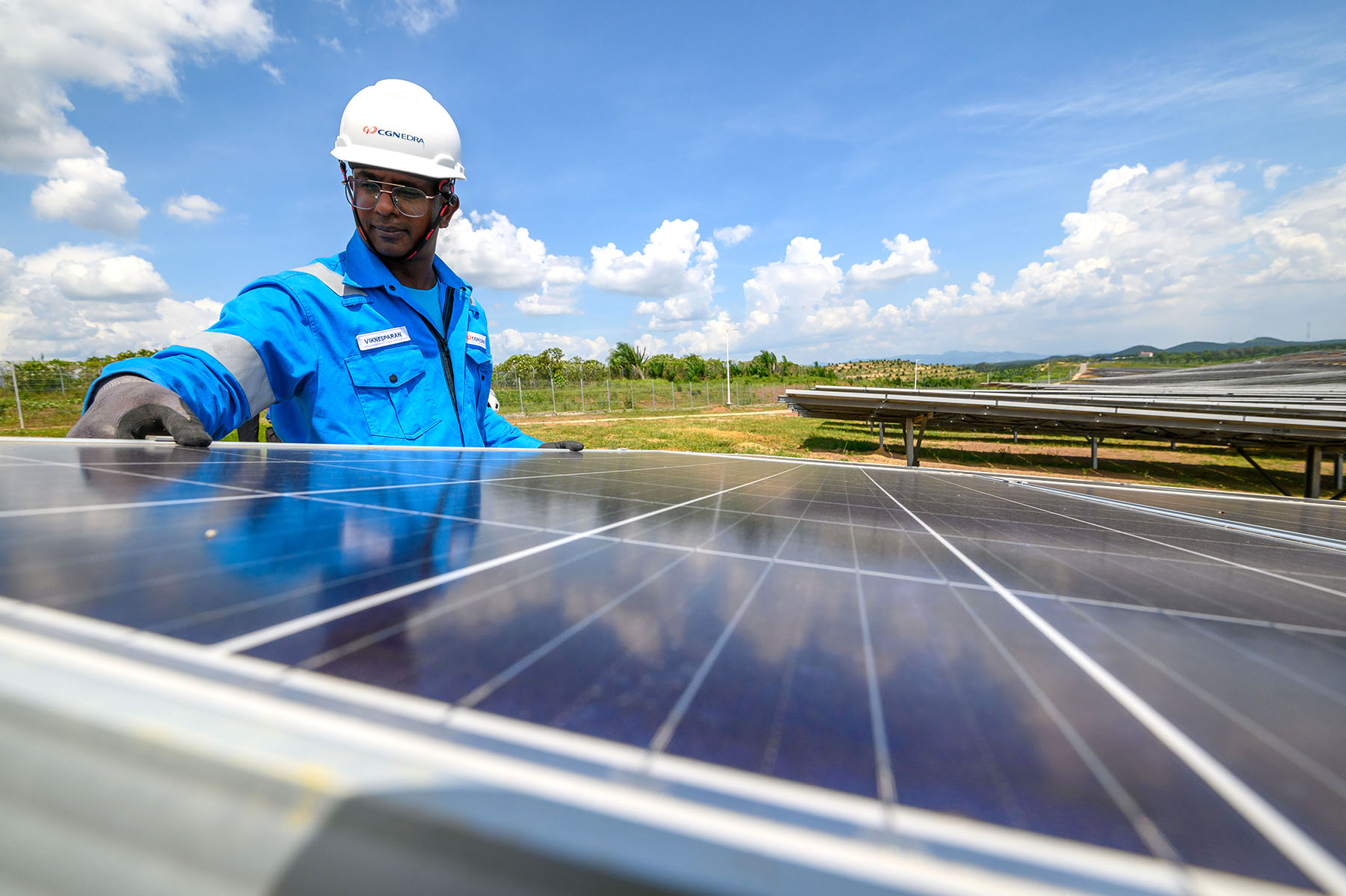
Boosting domestic renewable energy generation will protect the green technology industry of Southeast Asian nations and mitigate the potential impact of steep import tariffs imposed by the United States on solar panels from the region, analysts said.
Starting June 9, the US will impose tariffs ranging from around 14 percent to over 3,400 percent on solar exporters in Thailand, Malaysia, Cambodia and Vietnam. The US International Trade Administration (ITA) announced on April 21 that it is levying punitive tariffs against imported solar cells from these four countries.
ITA said it made the decision after a year-long investigation revealed that the solar products were being “dumped into the US market” and that the exporting companies are receiving government subsidies.
“Replacing a market the size of US will not be easy but they (ASEAN solar exporters) will need to try, including boosting domestic solar installation”, said Putra Adhiguna, Jakarta-based managing director of the independent think tank Energy Shift Institute.
Adhiguna said the barriers imposed against four ASEAN countries may open up a narrow window of opportunity for other Southeast Asian countries that are not targeted by steep tariffs. But he said that unless the Association of Southeast Asian Nations (ASEAN) can bolster domestic demand, the opportunity cannot be sustained.
According to the Institute for Energy Economics and Financial Analysis (IEEFA), the US imported 55 gigawatts (GW) of solar panels, nearly 90 percent of which came from ASEAN members. The region also exported 14 GW of solar cells — the key input for solar panels — to US assemblers.
The Washington-based energy think tank has estimated that robust US demand for solar products could support some increased import costs, but any price increase beyond 250 percent would make most ASEAN imports untenable.
Grant Hauber, IEEFA’s strategic energy finance advisor, said the tariff hikes should encourage ASEAN to diversify their energy sources as domestic markets “represent a real, short-run opportunity” for the ASEAN green technology sector.
READ MORE: ASEAN eyes united response to tariffs
He added that this will also help ASEAN members meet their decarbonization targets in line with the Paris climate accord commitments and protect the domestic economies from global oil price volatility.
“Renewable energy is a hedge against global market changes because your cost of (installing) renewable energy (infrastructure) is your upfront cost of investment, and that’s it. You don’t have to (import) fuel,” Hauber told China Daily.
But more than boosting consumer demand, analysts said that ASEAN’s power grid landscape needs to be upgraded to improve grid connection of renewable energy power generation.
A study published in March by the Jakarta-based ASEAN Center for Energy revealed that ASEAN countries have distinct challenges integrating Distributed Energy Resources such as rooftop solar photovoltaic systems and battery energy storage into the grid.
For example, Vietnam is the renewable energy leader in the region on back of its high installed capacity, also struggles with transmission congestion, forecast errors, and low system inertia. Thailand deals with major line tripping and generation trips, while Laos, which depends on hydropower, must manage seasonal fluctuations between surplus and shortages.
Shabrina Nadhila, an Indonesia-based analyst at global energy think tank Ember, said there is growing interest for renewables in the Asia-Pacific region and that Southeast Asian countries can leverage this momentum by diversifying their export destinations.
“The current trade landscape also opens the door for these (solar exporting) countries to regional partnerships within ASEAN and strengthen the intra-regional trade,” Nadhila told China Daily, noting that whether it is renewables or fossil fuels, it is risky for any country to rely on a single energy source.
“Building a diverse and resilient energy system is part of national energy security,” she said.
Ember’s latest report on global electricity showed that despite ASEAN’s abundant solar, wind and hydropower sources, the region only generated 26 percent of its electricity from renewable energy sources in 2024. This is below the 40 percent global average. Only Laos and Vietnam surpassed the global average, at 77 percent and 44 percent respectively, due to their abundant hydropower.
ASEAN’s untapped solar and wind potential surpasses 30,000 GW and 1,300 GW respectively, but installed capacity in the region remains at 26.6 GW for solar and 6.8 GW for wind.
Antonius Pangestu, operations manager at Solar Surya Indotama, a Jakarta-based solar panel distributor, is hoping the foray of state utility firm Perusahaan Listrik Negara (PLN) into solar panels manufacturing will boost domestic demand for solar power. Pangestu said the presence of PLN’s solar panels in retail markets can reduce prices that can attract more customers.
PLN has partnered with two private firms to operate an integrated photovoltaic solar cell and module manufacturing plant at the Kendal Industrial Zone in Central Java. The plant was launched in October 2024 and has a production capacity of 1 gigawatt peak.
Source: China Daily
Share: